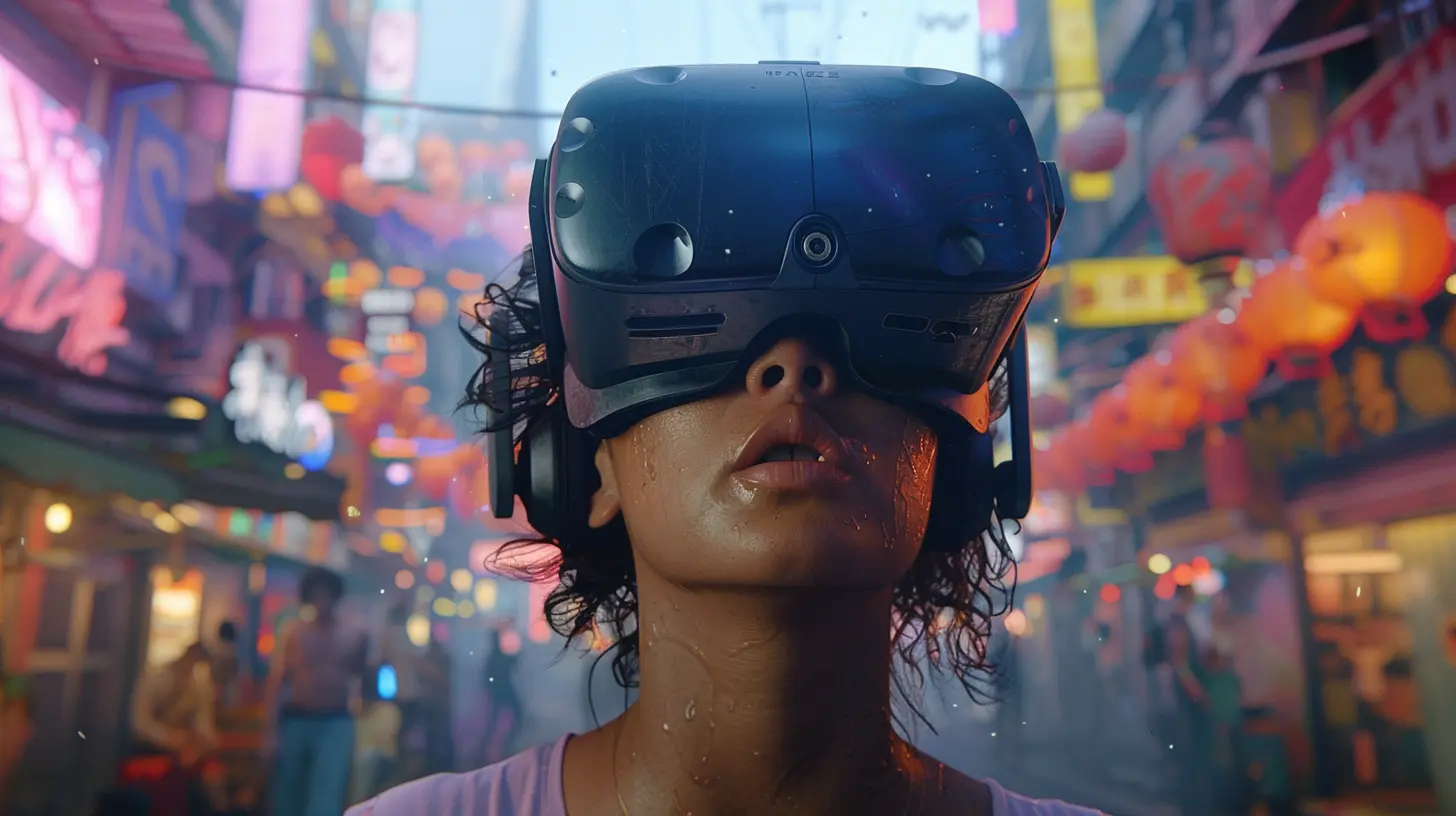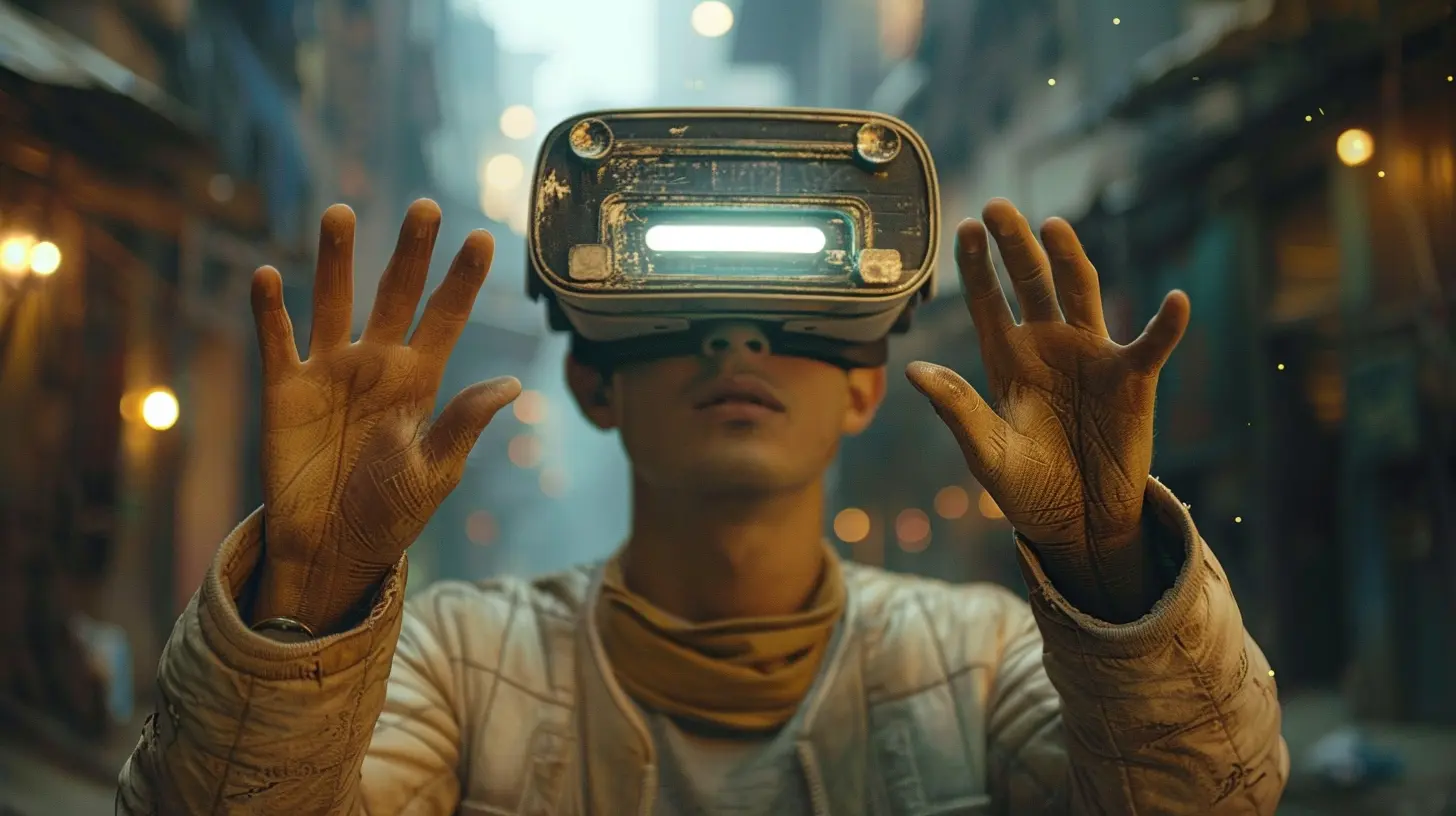Embracing the Unseen: The Role of Peripheral Vision in VR
8 May 2025
Virtual Reality (VR) has come a long way from being just another buzzword to becoming a revolutionary technology that’s changing how we experience everything from gaming to education. But, let’s face it—most discussions around VR focus on things like resolution, frame rates, and how insanely real the graphics look. While those elements are undoubtedly important, one often-overlooked gem in the VR experience is peripheral vision. Yep, that blurry stuff you notice in your side view? It plays a much bigger role than you think.
So grab your VR headset (or just imagine you’re wearing one), and let’s dive into why peripheral vision is the unsung hero of virtual reality. 
What Exactly Is Peripheral Vision?
Before we dig into its VR relevance, let’s break down what peripheral vision actually is. Peripheral vision is the ability to see objects and movement outside your direct line of sight. It's what happens in the "corners" of your eyes—your side view, essentially.Think of it this way: when you're driving and notice a speeding car in your side mirror before it enters your full view? That’s your peripheral vision doing its job. It’s not as sharp as your central vision, but it’s faster at detecting motion, giving you a heads-up without you even realizing it. 
Why We’ve Ignored Peripheral Vision in VR (Until Now)
For the longest time, VR developers primarily focused on what was directly in front of you. And I mean, who wouldn’t? It’s the centerpiece of your attention—the place where all the action happens. Developers prioritized crispy visuals and realistic textures in your line of sight, often leaving the edges in the dust (or, worse, a blurry haze).But here’s the thing—your brain doesn’t work that way. Your peripheral vision contributes hugely to your sense of presence, motion, and even balance. Strip that away, and no matter how stunning the rest of the experience is, something will just feel...off.
Need an example? Think back to older VR games where you felt dizzy or disoriented. That weird out-of-sync-ness was partly because the software ignored peripheral cues. It’s like watching a widescreen movie on a tiny phone screen—all wrong. 
The Science of Peripheral Vision: More Than a Sidekick
Peripheral vision isn't just some backup plan for your eyes. It's an integral part of how we perceive the world. Your field of view (FOV) is roughly 190 degrees, and only about 2% of that provides sharp, central vision. That’s right—98% of your view is peripheral. Crazy, huh?Here’s the kicker: your peripheral vision is wired to detect motion and spatial awareness. This is why it’s essential for VR. When you’re immersed in a virtual world, your brain expects to pick up on subtle environmental cues—things like shadows, movement, or depth.
If your VR experience skips out on this, the illusion crumbles like a Jenga tower. Ever had that nauseating “VR sickness”? Peripheral disconnection might be the culprit. 
The Role of Peripheral Vision in Immersion
Okay, so what’s this all got to do with making VR more epic? In one word—immersion.Immersion is the bread and butter of VR. If you’re not fully sucked into the experience, it’s just a glorified screen strapped to your face, right? Peripheral vision is key to achieving that full-on "I'm actually in another world" feeling.
Think of it like building a house. You can have the best living room with all the fancy furniture, but if the walls are missing, the whole thing feels exposed. Peripheral vision is those metaphorical walls—it completes the environment and makes it feel real.
Imagine you’re in a VR jungle. You hear rustling leaves. Now, your central vision shows a path ahead, but your peripheral vision should catch the movement of trees swaying or a shadow flickering at the edge of your view. Without those subtle details, your brain screams, “This ain’t real!”
Motion Detection and Balance
Let’s not forget how crucial peripheral vision is for motion detection and balance. Your sense of equilibrium relies a lot on visual and spatial cues. Have you ever played a VR game where things felt slightly “floaty” or like your movements didn’t sync up? That might be because the developers failed to incorporate proper peripheral stimuli.A good VR system should simulate those “quick glances” and motion tracking that you subconsciously depend on in real life. For instance, when you’re running in a game, your peripheral vision should pick up on the rapid movement of your environment zooming past. Without it, your brain struggles to sync the visual cues with your inner ear, which often leads to—you guessed it—motion sickness.
Why Wide FOV Headsets Are the Game-Changers
Now, this is where things get exciting. Modern VR headsets are finally starting to get the memo about peripheral vision. Headsets like the Pimax Vision 8K or even the Varjo XR-3 are pushing for ultra-wide FOVs, some even nearing 200 degrees. That’s practically mimicking the natural human field of view.With wider FOV headsets, you don’t feel like you’re looking through a glorified scuba mask anymore. Instead, it actually feels like YOU are there, whether it’s on a battlefield, in outer space, or at the bottom of the ocean.
Why Developers Need to Step Up Their Game
The hardware is catching up, but let’s be real: software developers need to step up, too. Many VR games and apps still don’t leverage peripheral vision properly. It’s not just about slapping on a wide FOV and calling it a day. Developers need to design environments and gameplay mechanics that actively engage your side view.For example, stealth games could make great use of peripheral vision. Imagine sneaking through a dark corridor, and instead of a huge red arrow pointing out an enemy, you catch them out of the corner of your eye. Way more immersive, right?
Similarly, horror games can really dial up the creep factor by integrating sudden movements or shadows in your periphery. (Because let’s be honest, nothing’s scarier than seeing something move and not knowing where it went!)
Challenges of Implementing Peripheral Vision in VR
Of course, it’s not all sunshine and rainbows. Incorporating peripheral vision in VR does come with its fair share of challenges. For starters, creating wide FOV displays is a technical nightmare. You’re essentially asking hardware to render high-quality visuals not just in front of you but all around you—without turning the whole setup into a laggy mess.Then there’s the issue of computational power. Wider FOVs mean more pixels to process, and that puts a strain on GPUs. Unless you’ve got a beast of a PC, you might have to choose between better immersion or buttery-smooth frame rates.
Finally, there’s the design hurdle. Developers need to strike a balance between utilizing peripheral vision and not overwhelming players. Imagine a VR world with too much going on in your periphery—it’d be like trying to read a book in a busy nightclub. Exhausting, right?
The Future of Peripheral Vision in VR
So, where are we headed? Peripheral vision is finally getting the recognition it deserves, and that’s a good thing. As both hardware and software catch up, we’ll likely see VR experiences become even more lifelike.Future developments could include dynamic rendering, where only the parts of the screen you’re actively focusing on are in ultra-high definition, while the periphery is rendered in lower resolution (just like how your real eyes work). This could save on processing power while still delivering an immersive experience.
And who knows? In a few years, VR might fully integrate with augmented reality (AR), blending physical and digital worlds seamlessly. Imagine peripheral vision cues that interact not only in VR but with real-world elements, like a heads-up display that reacts to actual motion around you.
Wrapping It Up
Peripheral vision in VR is like the secret spice in your grandma’s famous recipe. Nobody talks about it, but without it, the dish just isn’t the same. It’s essential for immersion, balance, and overall realism, yet it’s been overlooked for far too long.With advancements in FOV tech and smarter software design, we’re finally seeing peripheral vision take center stage. And honestly? It’s about time. So the next time you strap on your VR headset, take a second to appreciate your side-eye game—it might just be the thing that makes or breaks your virtual journey.
all images in this post were generated using AI tools
Category:
Virtual RealityAuthor:

Whitman Adams
Discussion
rate this article
4 comments
Jemima Riggs
Great insights! Peripheral vision significantly enhances immersion in VR experiences.
May 16, 2025 at 4:17 AM

Whitman Adams
Thank you! I'm glad you found the insights valuable. Peripheral vision truly plays a crucial role in creating immersive VR experiences.
Verity Matthews
Great article! It’s fascinating to see how peripheral vision enhances the VR experience. Understanding this aspect can really change how we engage with virtual worlds. Keep up the fantastic insights!
May 14, 2025 at 4:31 AM

Whitman Adams
Thank you! I'm glad you found the article insightful. Peripheral vision truly does transform our VR experiences!
Vanessa Alvarez
Great insights! Understanding peripheral vision’s impact in VR can enhance immersion and gameplay. Developers should consider optimizing visual cues for a more engaging experience.
May 12, 2025 at 4:27 PM

Whitman Adams
Thank you! I completely agree—optimizing visual cues can significantly elevate the immersive experience in VR. Your insights are appreciated!
Valeria McMahon
Such an insightful read! Peripheral vision truly enhances immersive VR experiences.
May 10, 2025 at 4:35 PM

Whitman Adams
Thank you! I'm glad you found it insightful. Peripheral vision is indeed key to creating more immersive VR experiences!



